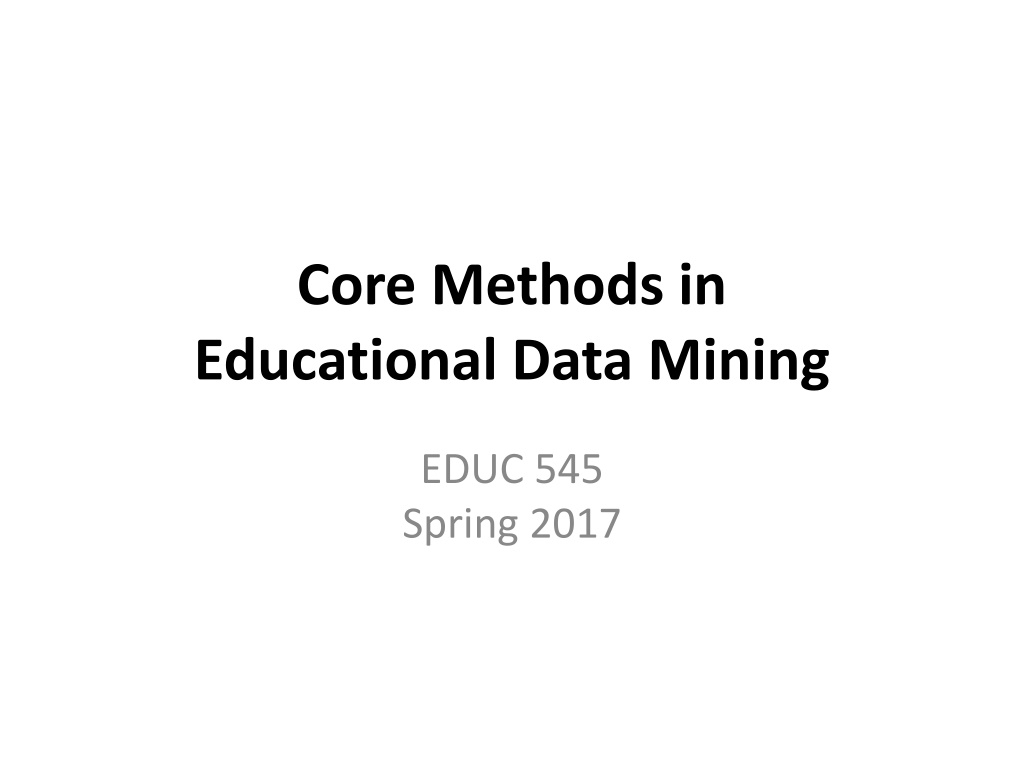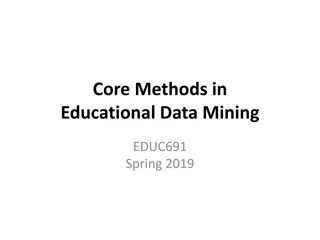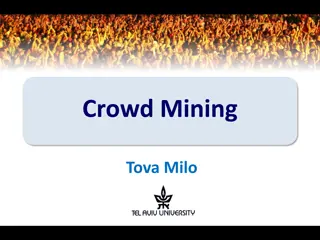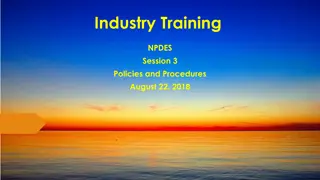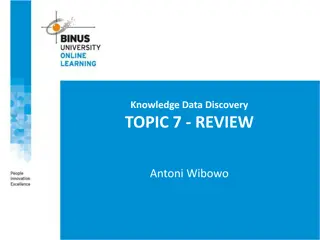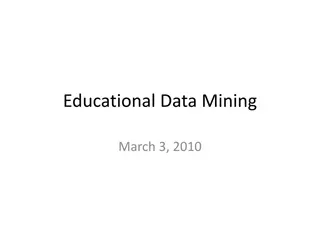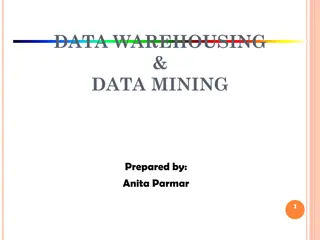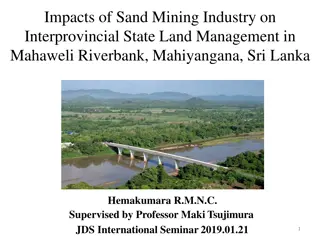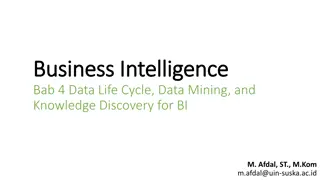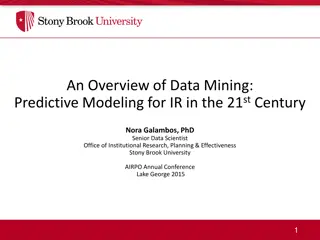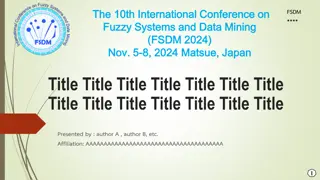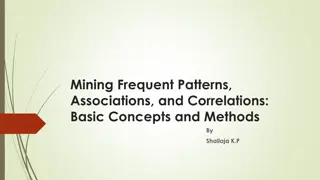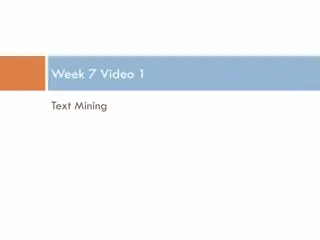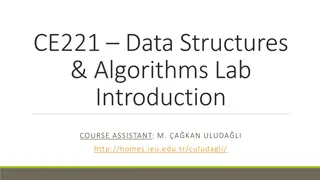Exploring Methods in Educational Data Mining - Assignments and Analyses
Dive into the world of educational data mining through a series of assignments focusing on various analysis methods such as principal component analysis, factor analysis, Learning Factors Analysis, Barnes's Q-Matrix method, and more. Participants present their solutions, tools used, and final results, showcasing a diverse range of approaches and outcomes.
Download Presentation

Please find below an Image/Link to download the presentation.
The content on the website is provided AS IS for your information and personal use only. It may not be sold, licensed, or shared on other websites without obtaining consent from the author. Download presentation by click this link. If you encounter any issues during the download, it is possible that the publisher has removed the file from their server.
E N D
Presentation Transcript
Core Methods in Educational Data Mining EDUC 545 Spring 2017
Assignment C3 Who here used principal component analysis?
Assignment C3 Who here used principal component analysis? One person come up here and explain your solution How did you do it? What tool did you use? What was your final result?
Did anyone else Use the same method Get a different answer What was your answer? What did you do differently?
Assignment C3 Who here used a different type of factor analysis? (Not including LFA) One person come up here and explain your solution How did you do it? What tool did you use? What was your final result?
Did anyone else Use another factor analysis method Get a different answer What was your answer? What did you do differently?
Assignment C3 Who here used Learning Factors Analysis? One person come up here and explain your solution How did you do it? What tool did you use? What was your final result?
Did anyone else Use the same method Get a different answer What was your answer? What did you do differently?
Assignment C3 Who here used Barnes s Q-Matrix method? One person come up here and explain your solution How did you do it? What tool did you use? What was your final result?
Did anyone else Use the same method Get a different answer What was your answer? What did you do differently?
Assignment C3 Who here used Knowledge Spaces or Partial Order Knowledge Spaces? One person come up here and explain your solution How did you do it? What tool did you use? What was your final result?
Did anyone else Use the same method Get a different answer What was your answer? What did you do differently?
Assignment C3 Who here used Non-Native Matrix Factorization?
Assignment C3 Who here used Non-Native Matrix Factorization? Really?
Assignment C3 Who here used Non-Native Matrix Factorization? Really? How did you set it up? What was the result?
Assignment C3 Did anyone use a different method than any of these? What did you use? How did it work?
Why Did folks use the methods they used? Did folks not use the other methods?
What are The pluses and minuses of PCA for this problem?
What are The pluses and minuses of other FA for this problem?
What are The pluses and minuses of LFA for this problem?
What are The pluses and minuses of Barnes s method for this problem?
What are The pluses and minuses of KS/POKS for this problem?
Any other questions or comments on the assignment?
What could I have changed about the assignment That would have made LFA the obviously best approach to solving it?
What could I have changed about the assignment That would have made KS/POKS the obviously best approach to solving it?
What are the relative benefits of using a q-matrix versus a knowledge space?
What are the consequences of getting a knowledge mapping wrong?
What are the relative advantages of Automatic model discovery Hand-development and refinement Hybrid approaches
What does a spike in a learning curve mean? (Distinct from MBMLM) 70 60 50 Error Rate 40 30 20 10 0 1 2 3 4 5 6 7 8 Opportunities to Practice Skill
70 60 50 Error Rate 40 30 20 10 0 1 2 3 4 5 6 7 8 Opportunities to Practice Skill
What is the trade-off Between Knowledge Spaces And Bayes Nets ?
Next Class Wednesday, April 19 Assignment B5 due Baker, R.S. (2015) Big Data and Education. Ch. 5, V1, V2. Rai, D., Beck, J.E. (2011) Exploring user data from a game-like math tutor: a case study in causal modeling. Proceedings of the 4th International Conference on Educational Data Mining, 307-313.[pdf] Rau, M. A., Scheines, R. (2012) Searching for Variables and Models to Investigate Mediators of Learning from Multiple Representations. Proceedings of the 5th International Conference on Educational Data Mining, 110-117. [pdf] Slater, S., Ocumpaugh, J., Baker, R., Scupelli, P., Inventado, P.S., Heffernan, N. (2016) Semantic Features of Math Problems: Relationships to Student Learning and Engagement. Proceedings of the 9th International Conference on Educational Data Mining, 223-230.[pdf]
